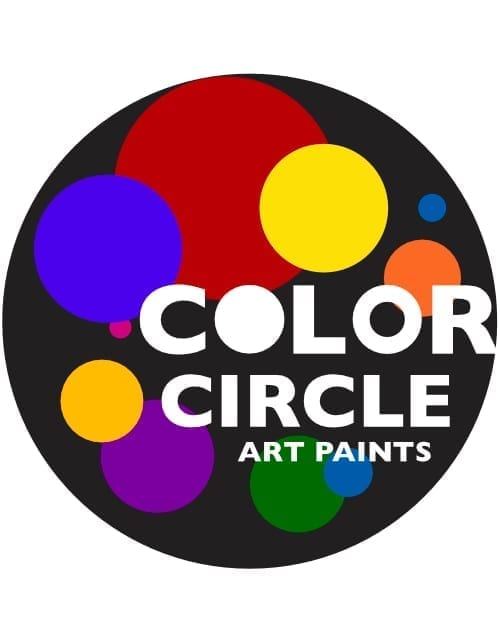Color theories and color order systems
There are many methods of organizing hues and their theories as clearly as possible.
However, these color models are usually created for a specific purpose:
Artists need different color systems than printers or textile dyers, for example.
The color industry needs standards, without which the production or application of colors is impossible.
Color classification systems and color charts with standards must therefore exist so that experts can communicate with each other and not use different standards. Otherwise, a “color Babylonia” is created.
However, declaring these technically oriented color models as binding for free artistic works is problematic, because color perception is and remains subjectively colored and differs from person to person!
Example of printing inks
In the printing industry, the three chromatic colors yellow (lemon yellow), magenta (a bluish red) and cyan (a rather cold blue) have become established for practical and financial reasons.
With the additional black, it is possible to offer a large proportion of the color combinations required for normal printed matter.
But: a beautiful and pure violet, orange or other pure color impressions cannot be achieved with it. High-quality art prints are therefore printed with more than four colors. This costs correspondingly more.
In the same way, a normal ink jet printer only has 4 print colors.
A high-quality professional photo printer, on the other hand, works with 10 or more color inks (including additional gray tones for gray gradients).
Controversies about color wheels & color laws
In the world of color, there is great controversy about how to deal with the teaching of color knowledge in our digital age.
Traditionalists are “arguing” with representatives of modern color research.
Older color theories that were developed before today’s digital possibilities definitely cannot help us.
Goethe and the artist Philipp Otto Runge had no modern pigments or dyes available for their color research.
Not to mention artificial light sources with their different light colors, or digital screens and measuring devices.
They had to find out all their findings purely empirically through experiments.
Their research results can certainly serve as inspiration – and are often very beautiful to look at.
A lot has also been written about the so-called “laws of color perception”. For us, laws in the creative field always sound like rigid instructions that have to be followed. However, this contradicts artistic freedom …
To be continued …
Find your own way!
Finding your own way through the jungle of opinions and classification models is tedious.
So if you work as an artist (in your free time) or as a teacher, you can save yourself long detours (on which, however, you can see a lot) by first exploring for yourself what the wonderful world of colors has to offer!
Instead of learning color circles and so-called color laws by heart, all you need to do is get creative yourself.
Your own, subjective order will then emerge automatically over time – supported by more modern suggestions for color arrangements than those of Goethe or Itten …
To be continued…
How color is still commonly taught in schools
Most of us grew up with Johannes Itten’s theory of color.
His “Art of Color” from 1961 still has a huge influence on the way the subject of “color” is taught in schools today.
His statement: You should be able to mix all the colors of the color wheel from the three primary colors yellow, red and blue.
However, as paint manufacturers, we at Color Circle Art Paints know perfectly well that this can never work!
It is not a defect of the paints, but simply not possible.
In addition, in the middle of the 20th century, “yellow”, “red” and “blue” were not understood to be exactly the same shades as they are today.
Printed illustrations of Johannes Itten’s color wheel are often used in schools, which are either printed in more than the three colors – or simply cannot show all the hues as Itten actually wanted to convey them.
If the students then have to imitate a color wheel according to Itten, the result is only frustrating in the form of strange color combinations. But certainly not a color experience!
Many teachers also don’t know exactly how color mixing works.
This is how it can turn out:
The teacher of one of our children wanted to make the primary school pupil believe that mixing yellow and black makes yellow.
As color specialists, however, we were almost unable to talk him out of it, as the authority clearly lay with the teacher …
To be continued …
This page is a work in progress!
If you have any tips on how to make the content even better, please let us know.
Thank you!

